100 kW Solar Power Plant Cost in Haryana: The Ultimate Guide to the Best Rate Per Watt
100 kW Solar Power Plant Cost in Haryana: The Ultimate Guide to the Best Rate Per Watt
Switching to solar isn’t just about saving money anymore; it’s about building a cleaner, smarter future. For industries, schools, hospitals, and large establishments, a 100 kW solar power plant offers the perfect balance between performance and space utilization.
At Smart Roof Solar, we specialize in designing and installing high-efficiency systems that make solar energy economical, reduce solar installation charges, and deliver reliable solar electricity year after year.
What is a 100 kW Solar Power Plant?
A 100 kW solar panel system generates enough power to run medium-sized factories, commercial complexes, or institutions. On average, it produces 400–450 units of solar electricity per day, depending on sunlight and location.
This system usually needs around 7,000-8,000 sq. ft of rooftop area (roughly 70 sq. m per 10 kW, the approximate solar panel area per kW). It can be installed as an on-grid or hybrid setup to maximize savings and energy reliability.
With rising power tariffs, this scale of installation offers one of the lowest costs of solar per kWh installed, making it a smart long-term investment in renewable energy technology.
100 kW Solar Power Plant Price we offer (2025)
The total cost of solar installation varies by system design, brand quality, and site conditions. The table below shows the total estimated cost in Haryana:
Capacity | Estimated Cost (excluding GST) |
50 kW in Haryana | Starting from ₹12,50,000* |
100 kW in Haryana | Starting from ₹24,00,000* |
150 kW in Haryana | Starting from ₹35,25,000* |
200 kW in Haryana | Starting from ₹47,00,000* |
*Prices quoted are indicative starting rates for 100 kW solar installations and may vary based on project-specific requirements, including ground mount or tin-shed structures, RC installation types, additional accessories like DG sync, safety rails, etc. Final pricing will be confirmed upon detailed site evaluation and project scope assessment
For 2025, the average cost of solar panels on a house or industry will differ, depending on quality and service scope.
System Specifications
Typical 100 kW setup details:
- Solar Modules: 400-450 W Mono PERC panels (smart solar panel price depends on brand).
- Inverter: 3-phase on-grid 100 kW model with efficiency > 98%.
- Mounting Structure: MS hot-dip galvanized frame for durability.
- Generation: 1.4-1.6 lakh units annually.
- Expected Lifespan: 25 years with O&M support.
Power Generation and Payback
Thanks to Rajasthan-level irradiation, a 100 kW plant can save ₹12 – ₹16 lakh per year on bills. Depending on tariff rates and solar roof installation cost, the payback period is typically 3-4 years.
After that, you generate free solar electricity, reducing your long-term energy dependence and making solar energy economical for decades.
Ideal Applications
A 100 kW solar plant is suitable for:
- Manufacturing units & industries
- Schools, colleges & institutions
- Offices & corporate buildings
- Hospitals & healthcare facilities
- Warehouses & cold storage
Each installation is custom-engineered to reduce the solar energy installation cost and enhance return on investment.
Benefits of Installing a 100 kW Solar System
1. Significant Savings
Lower power bills and better ROI per unit of solar electricity.
2. Low Maintenance
Professional O&M reduces downtime and extends life.
3. Sustainability
Cuts CO₂ emissions by over 140 tons per year.
4. Strong ROI
15–20 % annual return over 25 years.
5. Supports Renewable Goals
Shows commitment to renewable energy and solar energy adoption.
Factors Affecting the 100 kW Solar Plant Cost
Module Efficiency
High-efficiency mono PERC panels cost more but yield better solar installation cost per kWh.
Roof Type & Height
Affects the mounting material and labor.
Cables & Safety
Proper sizing reduces losses and fire risks.
Location
Sunlight availability affects generation and ROI.
Warranty & After-Sales
Affects the long-term total cost of solar installation.
Smart Roof Solar ensures transparent breakdowns for every component, from solar installation charges to panel quality and performance.
Why Choose Smart Roof Solar
At Smart Roof Solar, we don’t just install panels, we engineer performance.
- Design & Yield Optimization to lower your solar roof installation cost.
- Clear pricing on solar panel system cost and materials.
- End-to-end O&M and monitoring services.
- Expert guidance on the government solar subsidy scheme for eligible projects.
Our goal is simple: deliver clean, dependable, and renewable solar solutions that help you save and sustain.
Conclusion
A 100 kW solar power plant offers the perfect mix of efficiency, scale, and savings. By investing in solar today, you cut operational expenses, reduce carbon impact, and secure energy independence for the future.
Contact Smart Roof Solar to get a customized quote for your 100 kW installation, including accurate solar module price per watt, estimated generation, and a complete breakdown of solar installation charges and returns.
FAQs
Q1. How long does it take to install a 100 kW solar power plant?
Ans: Typically, installation takes 4–6 weeks from design approval to commissioning, depending on site conditions.
Q2. What type of maintenance does a 100 kW system need?
Ans: Mainly cleaning of panels and routine inverter checks every 3–6 months. Check our blog to know more about maintenance – Monitoring Services for Solar Plants – Smart Roof Solar
Q3. Do I need a separate meter for solar energy export?
Ans: Yes, a bi-directional net meter is installed to track both import and export of electricity.
Q4. Can a 100 kW system power an entire factory independently?
Ans: It depends on the factory’s load profile; typically, it offsets a major portion of grid usage but not all.
Q5. How does dust or pollution affect solar generation in Haryana?
Ans: Dust accumulation can reduce efficiency by 5–10%, so regular cleaning is essential.
Suggested Articles
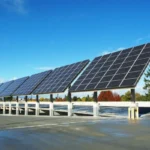
Selecting Solar Panels: Best Guide for Homes and Factories
Solar panels are a hot topic these days, as the cost of solar is finally approaching what the average family can afford.
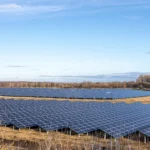
100 kW Solar Plant Cost in Rajasthan: Latest Cost, Maintenance & Payback Time
Installing a 100 kW solar plant in Rajasthan costs around ₹40–60 lakh in, with annual savings up to ₹10–12 lakh. Discover maintenance needs, ROI, and payback period of 4–6 years.
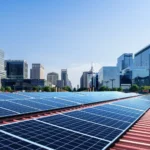
UP Government Incentive: Stamp Duty Exemption for Solar Land
Uttar Pradesh offers stamp duty exemption on land for solar projects, encouraging investment and growth in renewable energy.

Case Study: Successful Design, Installation, and Commissioning of a 50 kWp Rooftop Solar PV Plant
This case study details our experience in designing, installing, and commissioning a 50 kWp solar PV rooftop power plant. Learn how we overcame technical challenges, optimized system performance, and delivered clean, reliable energy. Discover insights on panel selection, inverter sizing, monitoring, and commissioning processes that ensured maximum efficiency and long-term performance for the rooftop solar installation.
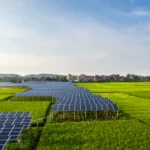
AVANCIS Pushes CIGS Thin-Film Solar Modules Beyond 20% Efficiency
AVANCIS achieves a breakthrough in solar technology, pushing CIGS thin-film modules beyond 20% efficiency for higher performance and energy output.

Updated Rates of Solar Subsidy in Delhi: Cost, Eligibility & Benefits
Discover the latest solar subsidy rates in Delhi for 2025. This guide explains the updated costs, eligibility criteria, and benefits to help you maximize savings on your rooftop solar installation.
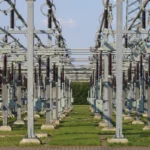
Haryana’s GEOA 2025: A Boost for Captive Solar Plants and Wind Energy Developers
Haryana’s GEOA 2025 paves the way for growth in captive wind and solar energy projects with investor-friendly reforms.

Everything You Need to Know About Solar System Earthing
Power factor after solar installation often fluctuates due to system design and load patterns. Learn the key causes, challenges, and solutions for better efficiency.